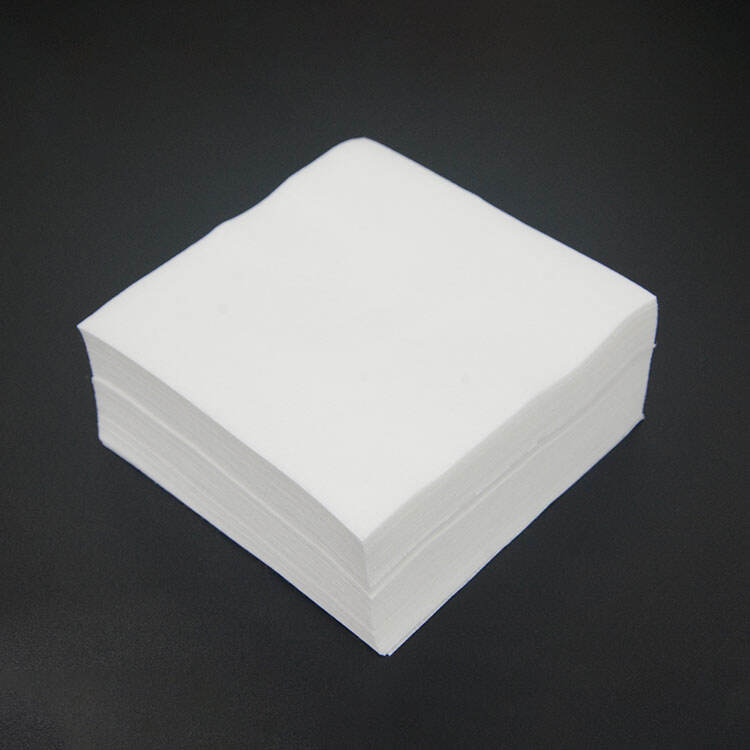Regulatory Requirements for Dust-Free Cloth in Healthcare Environments
The medical industry maintains stringent standards for dust-free cloth to ensure patient safety and product integrity in various healthcare settings. These specialized cleaning materials must meet exacting requirements for particle control, sterilization compatibility, and material composition to be suitable for use in hospitals, pharmaceutical manufacturing, and medical device production. Dust-free cloth plays a critical role in maintaining contamination-free environments where even microscopic particles could compromise sensitive medical procedures or sterile product manufacturing. The selection and use of dust-free cloth in medical applications involves careful consideration of regulatory standards, material properties, and specific use case requirements that differ significantly from general industrial applications.
Cleanroom Classification and Particle Standards
ISO Cleanroom Class Requirements
Medical facilities utilize dust-free cloth that complies with specific ISO cleanroom classifications depending on the application's sensitivity. ISO Class 5 environments, common in pharmaceutical compounding and medical device assembly, require dust-free cloth with ultra-low particle emission rates below 3,520 particles (≥0.5μm) per cubic meter. The dust-free cloth must maintain these cleanliness standards throughout its usable life, including after multiple sterilization cycles when reusable. Testing methods like IEST-RP-CC004.3 determine the particle count performance of dust-free cloth under simulated use conditions. Higher classification cleanrooms (ISO Class 4 and above) demand dust-free cloth with even more stringent particle control capabilities, often incorporating specialized materials and manufacturing processes. The dust-free cloth packaging itself must meet cleanroom transfer standards to prevent contamination before use in controlled environments.
Linting and Fiber Release Limitations
Medical-grade dust-free cloth must demonstrate minimal linting and fiber release during use to prevent contamination of sensitive areas and equipment. The Helmke Drum test quantifies lint generation by measuring particles released from dust-free cloth under controlled abrasion conditions. High-quality medical dust-free cloth typically shows fiber release rates below 100 particles/ft³ when tested according to ASTM standards. The fabric construction and edge sealing techniques significantly impact dust-free cloth's linting characteristics, with laser-cut edges and continuous filament fibers providing optimal performance. In surgical settings and sterile processing areas, dust-free cloth must not shed fibers that could interfere with wound healing or contaminate surgical instruments. Manufacturers validate dust-free cloth linting performance through accelerated aging tests that simulate real-world use conditions over time.

Material Composition and Safety Considerations
Biocompatibility and Chemical Compatibility
Medical applications require dust-free cloth materials that are non-toxic and biocompatible to prevent adverse reactions in patient care environments. ISO 10993 testing evaluates dust-free cloth for biological safety, assessing cytotoxicity, sensitization, and irritation potential. The material must resist degradation when exposed to common medical disinfectants like hydrogen peroxide, quaternary ammonium compounds, and alcohol-based solutions. Dust-free cloth used in pharmaceutical manufacturing must demonstrate compatibility with production chemicals without leaching additives or creating reactive byproducts. Color-coding systems in medical dust-free cloth help prevent cross-contamination between different cleaning zones or applications while using dyes that meet USP Class VI biocompatibility standards. The absence of latex, silicone, and other potentially problematic materials in dust-free cloth composition is verified through extractable and leachable testing protocols.
Sterilization Methods and Reusability Standards
Reusable medical dust-free cloth must withstand repeated sterilization cycles without compromising performance or releasing harmful substances. Common sterilization methods including steam autoclaving, ethylene oxide, and gamma radiation each present unique challenges for dust-free cloth materials. Validated sterilization protocols specify maximum cycle counts for dust-free cloth before replacement becomes necessary to maintain performance standards. The dust-free cloth must maintain its structural integrity, absorbency, and particle control capabilities after sterilization while not retaining sterilant residues. Single-use medical dust-free cloth eliminates sterilization concerns but requires validation of sterile barrier system packaging and shelf-life stability. Hospitals and medical device manufacturers establish strict rotation systems for reusable dust-free cloth to ensure timely retirement based on usage cycles and visual inspection criteria.
Performance Testing and Quality Assurance
Microbial Barrier Effectiveness
Medical-grade dust-free cloth must provide adequate microbial filtration efficiency to prevent contamination transfer during cleaning procedures. Testing measures the dust-free cloth's ability to block bacterial and viral particles under simulated use conditions, with higher-risk applications demanding greater barrier performance. The dust-free cloth's pore structure and fiber density determine its effectiveness at trapping microorganisms while allowing proper cleaning solution penetration. In sterile processing departments, dust-free cloth serves as both a cleaning tool and protective barrier for sensitive instrumentation. Validation testing includes challenge studies with standard test organisms to verify the dust-free cloth meets specified log reduction values for microbial contamination control. The material's antimicrobial properties, when present, undergo rigorous testing to confirm efficacy without compromising safety or material compatibility.
Absorbency and Cleaning Efficiency Metrics
Medical applications require dust-free cloth with carefully calibrated absorbency rates that balance liquid pickup with controlled evaporation. Standard test methods measure the dust-free cloth's absorbent capacity in grams of liquid per square meter of material. Surgical and procedural areas need dust-free cloth that quickly contains bodily fluids without oversaturation that could lead to contamination spread. The cleaning efficiency of medical dust-free cloth is quantified through standardized wipe tests using surrogate soils and contaminated surfaces. Texture and surface characteristics are engineered to provide effective cleaning without damaging delicate medical equipment surfaces or leaving residual lint. Performance testing includes assessments of the dust-free cloth's ability to remove both particulate and microbial contamination in a single pass under controlled conditions.
Implementation Protocols in Healthcare Settings
Department-Specific Usage Guidelines
Different medical departments establish specific protocols for dust-free cloth use based on risk assessment and regulatory requirements. Operating rooms typically use sterile, single-use dust-free cloth for highest-risk applications, while general patient care areas may utilize reusable options with validated disinfection protocols. Pharmaceutical cleanrooms implement strict dust-free cloth handling procedures to prevent contamination of sterile products and manufacturing surfaces. Central sterile processing departments categorize dust-free cloth by instrumentation type and cleaning risk level, with color-coding systems preventing cross-use. The dust-free cloth selection process considers factors like chemical compatibility with department-specific disinfectants and the need for static control in electronic equipment areas. Training programs ensure healthcare workers understand proper dust-free cloth selection, handling, and disposal techniques for their specific work environments.
Inventory Management and Traceability Systems
Medical facilities implement sophisticated tracking systems for dust-free cloth to ensure compliance with usage limits and replacement schedules. Barcode or RFID tracking helps monitor reusable dust-free cloth through its lifecycle from initial use to final retirement. Automated inventory systems trigger dust-free cloth replenishment orders based on real-time usage data and established par levels. Lot control systems maintain traceability of single-use dust-free cloth back to manufacturer certifications and sterilization validation records. Digital tracking solutions help document dust-free cloth usage for quality audits and regulatory compliance reporting. The inventory systems account for different dust-free cloth types used across various departments while preventing substitution that could compromise cleaning standards or patient safety.
FAQ
What certifications should medical dust-free cloth possess?
Medical-grade dust-free cloth should have ISO 13485 certification for medical devices, ISO Class cleanroom ratings appropriate for the application, and biocompatibility testing per ISO 10993 standards. Additional certifications may include IEST particle count compliance and material-specific sterilization validations.
How often should reusable medical dust-free cloth be replaced?
Replacement intervals for reusable medical dust-free cloth depend on the sterilization method and usage intensity but typically range from 50-100 cycles. Facilities establish retirement criteria based on visual inspection, performance testing, and manufacturer recommendations to ensure consistent cleaning effectiveness.
Can regular cleaning cloths be used in medical settings if thoroughly disinfected?
Standard cleaning cloths cannot substitute for validated medical dust-free cloth as they lack controlled particle release rates, proper material composition, and certified microbial barrier properties required in healthcare environments. The surface characteristics and construction of proper dust-free cloth are specifically engineered for medical applications.
What's the difference between surgical-grade and general medical dust-free cloth?
Surgical-grade dust-free cloth meets higher cleanliness standards with stricter particle count limits, superior microbial barrier properties, and validated sterile packaging systems. General medical dust-free cloth may have slightly relaxed particle standards while still meeting requirements for non-critical area cleaning in healthcare facilities.




